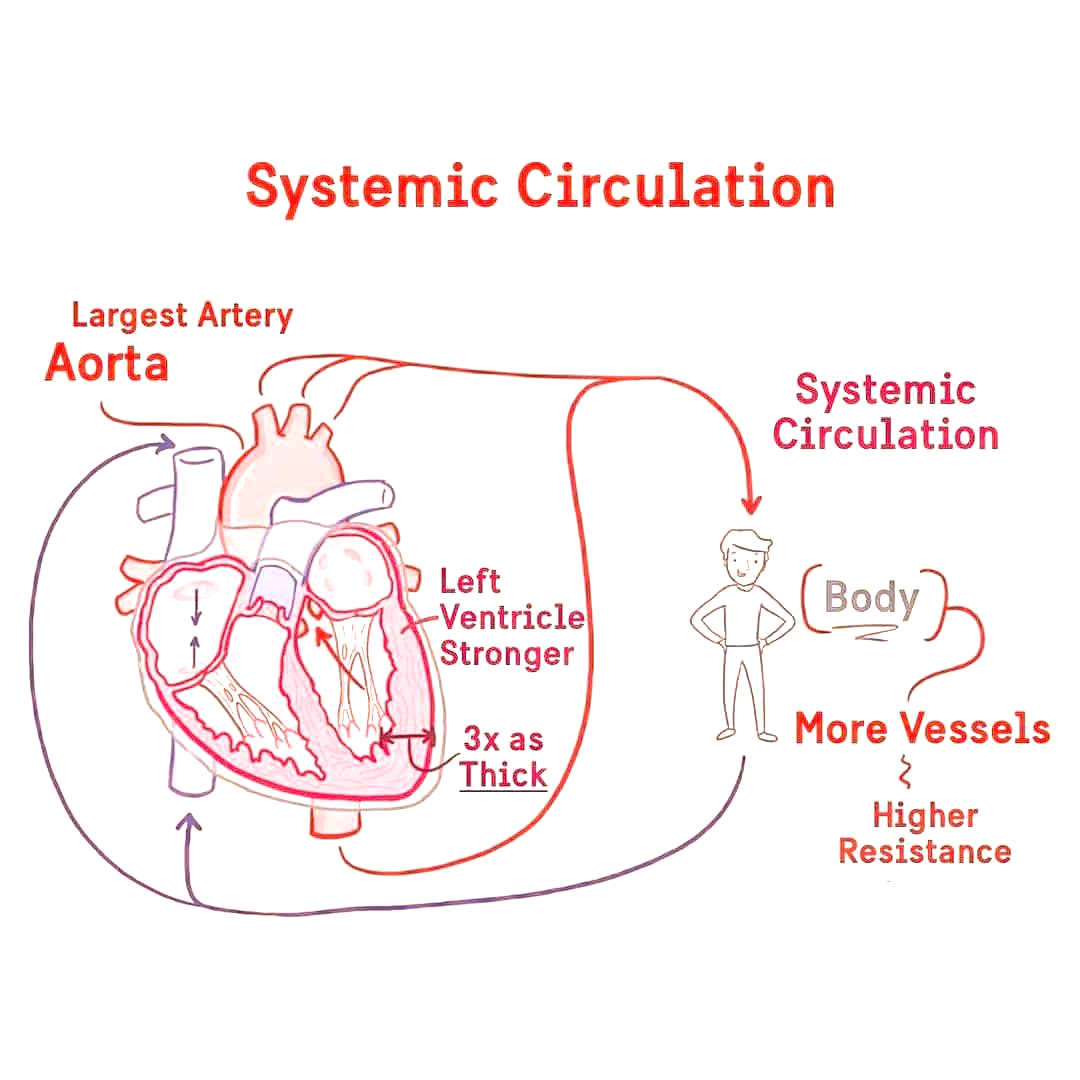
Systemic heart in higher vertebrates is
A. The left atrium and left ventricle in higher mammals
B. The left atrium and right ventricle
C. The right atrium and right ventricle receives venous blood and propelling it to lungs
D. The right atrium and left ventricle
Answer
491.7k+ views
Hint: They are the parts of the left heart which carries oxygenated blood to the body. The human heart has four-chambers and it undergoes double circulation.
Complete answer
The process of transport of oxygenated blood from the heart to the body with the help of the left atrium and left ventricle is called systemic circulation.
Additional information
- The heart is an organ that pumps blood through the blood vessels of the circulatory system.
- The heart in humans is divided into four chambers: the upper left and right atria and the lower left and right ventricles.
- The circulatory system of the blood has two components: the systemic circulation, and pulmonary circulation.
- Systemic circulation is the circulatory system that transports oxygenated blood away from the heart through the aorta from the left ventricle.
- In the left ventricle, the blood is stored for the day and returns as deoxygenated blood back to the heart.
- The first part of the systemic circulation is the aorta, which is a thick-walled large artery.
- The left atrium receives newly oxygenated blood from the lungs and pulmonary vein and is then carried out to the left ventricle.
So, the correct answer is ‘Left atrium and left ventricle in higher mammals’.

Note: Pulmonary circulation is the opposite of the systemic circulation. The pulmonary circulation is the system of blood vessels forming a closed circuit between the heart and the lungs while systemic circulation forms a closed circuit between the heart and all the other body tissues. Pulmonary circulation carries the deoxygenated blood from the lungs to the heart.
Complete answer
The process of transport of oxygenated blood from the heart to the body with the help of the left atrium and left ventricle is called systemic circulation.
Additional information
- The heart is an organ that pumps blood through the blood vessels of the circulatory system.
- The heart in humans is divided into four chambers: the upper left and right atria and the lower left and right ventricles.
- The circulatory system of the blood has two components: the systemic circulation, and pulmonary circulation.
- Systemic circulation is the circulatory system that transports oxygenated blood away from the heart through the aorta from the left ventricle.
- In the left ventricle, the blood is stored for the day and returns as deoxygenated blood back to the heart.
- The first part of the systemic circulation is the aorta, which is a thick-walled large artery.
- The left atrium receives newly oxygenated blood from the lungs and pulmonary vein and is then carried out to the left ventricle.
So, the correct answer is ‘Left atrium and left ventricle in higher mammals’.

Note: Pulmonary circulation is the opposite of the systemic circulation. The pulmonary circulation is the system of blood vessels forming a closed circuit between the heart and the lungs while systemic circulation forms a closed circuit between the heart and all the other body tissues. Pulmonary circulation carries the deoxygenated blood from the lungs to the heart.
Recently Updated Pages
Glucose when reduced with HI and red Phosphorus gives class 11 chemistry CBSE

The highest possible oxidation states of Uranium and class 11 chemistry CBSE

Find the value of x if the mode of the following data class 11 maths CBSE

Which of the following can be used in the Friedel Crafts class 11 chemistry CBSE

A sphere of mass 40 kg is attracted by a second sphere class 11 physics CBSE

Statement I Reactivity of aluminium decreases when class 11 chemistry CBSE

Trending doubts
10 examples of friction in our daily life

The correct order of melting point of 14th group elements class 11 chemistry CBSE

Difference Between Prokaryotic Cells and Eukaryotic Cells

One Metric ton is equal to kg A 10000 B 1000 C 100 class 11 physics CBSE

State and prove Bernoullis theorem class 11 physics CBSE

What organs are located on the left side of your body class 11 biology CBSE




